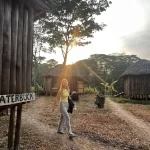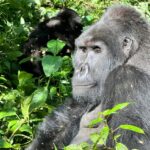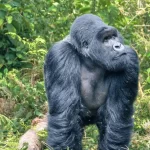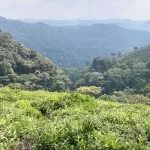The Gorilla Habituation Experience
In 1983, Dian Fossey raised global awareness about the endangered status of Mountain gorillas in the wilds of Africa. Since then, attention and efforts to protect these gentle giants have increased. One important method for protecting mountain gorilla populations is gorilla trekking. This allows visitors to embark on a guided hike through the rainforest and spend an hour with a habituated gorilla family in their natural environment. However, some visitors seek a deeper connection and wish to spend more time with the gorillas. To meet this demand, the Uganda Wildlife Authority created the gorilla habituation experience.
This rare and exclusive opportunity allows a small group of visitors to join a team of experts for a four-hour adventure, tracking and interacting with a gorilla family that is not yet fully accustomed to humans. Far more immersive than a typical trek, this experience is truly unique and enjoyed by only a few.
For anyone traveling to Uganda who has a deep love for gorillas and an interest in conservation work, we highly recommend the gorilla habituation experience. Below, we’ll share what to expect from this unforgettable encounter and answer some FAQs about it.
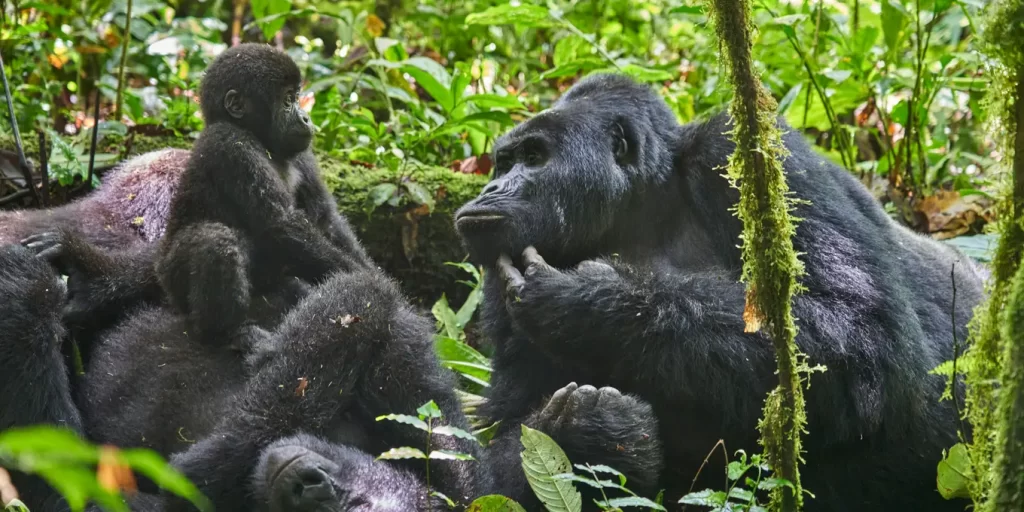
What is gorilla habituation?
Gorillas don’t naturally remain calm around people; achieving their relaxed, almost nonchalant attitude towards humans takes a process called habituation. Only gorilla families that have been habituated are open to visits from trekking groups, while unhabituated groups are left alone. This practice ensures the safety and well-being of both the gorillas and the visitors. Gorilla habituation is carried out by a team of specialists, including trackers, researchers, and park rangers.
They visit wild gorilla families daily for about three years, gradually getting closer and spending more time with them. The goal is to reduce the natural fear gorillas have of humans. Through consistent exposure, the gorillas learn that the team poses no threat and become comfortable living alongside humans.
After the habituation process, the gorilla families remain wild, continuing their natural behaviors and daily routines. The only difference is that they are now unbothered by the presence of a small group of humans.
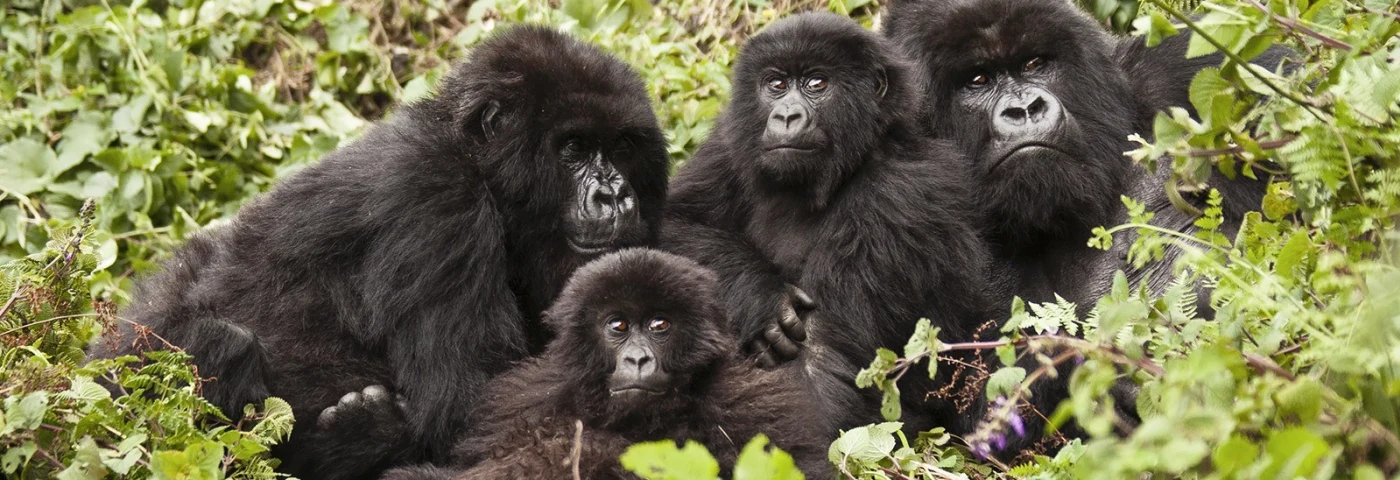
What is a gorilla habituation experience?
The gorilla habituation experience in Bwindi Impenetrable Forest offers a unique opportunity to be part of the habituation process by tracking a family of gorillas that is still in the semi-habituated stage.
At this stage, the gorillas are accustomed to the presence of trackers, researchers, and park rangers, but not yet to strangers. This experience helps the gorillas become more comfortable with seeing different people. It also provides researchers and visitors with a deeper understanding of these endangered animals.
Thanks to the progress made through habituation, researchers have gained valuable insights into how to best care for mountain gorillas when they’re sick or injured. Ultimately, the gorilla habituation experience helps make conservation efforts more sustainable while also supporting tourism.
What to expect on a gorilla habituation experience?
The gorilla habituation experience begins with an early morning briefing before heading out into the forest with the habituation team. Unlike traditional gorilla trekking, where the gorillas are already located by the trackers, this experience starts from where the gorillas were last seen the night before. You’ll walk alongside the trackers, learning the tell-tell that leads to gorillas’ nests like knuckle prints, broken plants, and leftover food.
Each night, gorillas build new nests to sleep in then move on looking for food. What they leave behind are important for monitoring their health and numbers. At the gorilla nests, the team collects hair and dung samples before continuing the search. The real adventure starts when you finally find the gorillas. The goal of habituation is to follow them while staying within their sight, gradually getting closer to reach that magical 7m cut-off point.
But unlike fully habituated gorillas who stay calm during your visit, these semi-habituated gorillas move quickly, dashing through dense rainforests, climbing slippery slopes and crawling on knuckles through bushes, with you and the tracker team in hot pursuit. It’s an intense physical challenge, and you’ll need to be fit to keep up.
Though all gorillas are wild, some are wilder than others and these semi-habituated ones can be more unpredictable. There’s a small risk of the silverback charging, but it’s usually a warning.
The trackers will guide you to stay calm, crouch down, and avoid eye contact. It’s easier said than done…When the gorillas are still, you’ll do the same, mimicking their movements and even making gorilla-like sounds to communicate with them. To have a gorilla reply to your low throaty rumbling, signifying contentment, is utterly spine-tingling.
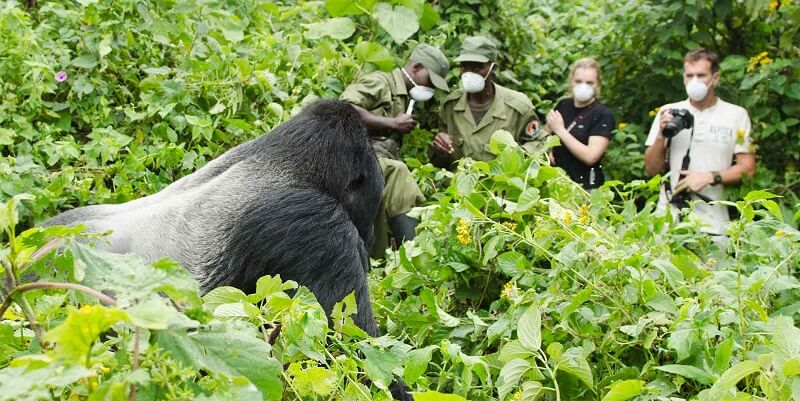
Gorilla habituation vs gorilla trekking: Which is better?
Gorilla trekking and the Gorilla Habituation Experience offer different ways to connect with gorillas, each with its own benefits. Traditional gorilla trekking, priced at US$800 per permit in Bwindi (or US$1500 in Rwanda’s Volcanoes National Park), guarantees a close-up encounter with gorillas for an hour in a relaxed and calm setting.
In contrast, the Gorilla Habituation Experience in Uganda costs US$1500 and you spend four hours with gorillas, though the actual time spent with the gorillas depends on how long it takes to find them.
The experience can be physically demanding as you follow the gorillas, and you may not get as close to them as you would on a trek. Sometimes, you might even spend time observing them while they rest.
However, this more intense and immersive experience offers a deeper understanding of these incredible animals, making it perfect for those seeking a more adventurous and informative encounter.
Where does gorilla habituation experience take place?
The Uganda Wildlife Authority (UWA) introduced the gorilla habituation experience in 2016. This experience takes place in the southern part of Bwindi Impenetrable National Park. More specifically, it occurs in the Rushaga sector, near the Nkuringo area. This area is known for its stunning landscapes and diverse gorilla families.
RELATED: Which is the most beautiful gorilla trekking sector in Bwindi?
What is included in the habituation experience permit?
The gorilla habituation experience permit covers the services of experienced rangers and researchers, guiding you through the process of tracking and spending up to four hours with mountain gorillas that are still undergoing habituation.
The permit also includes the park entrance fees for Bwindi Impenetrable National Park. Additionally, it provides the opportunity to gain valuable insights into gorilla conservation efforts and observe the gorillas in their natural, wild environment, making for a truly immersive and educational experience.
Who can join the gorilla habituation experience?
The gorilla habituation experience requires participants to have a moderate level of fitness due to the challenging terrain, dense vegetation, and high altitudes involved in the trek.
Additionally, the minimum age for participants is 15 years, ensuring that individuals are capable of handling the physical and mental demands of the experience. This unique opportunity is best suited for those who are eager for an unforgettable, immersive adventure in one of Africa’s most beautiful and remote rainforests.
You may also like: how difficult is gorilla trekking?
Where To Stay?
Bwindi Impenetrable National Park is quite large, so it’s best to stay in the Nkuringo or Rushaga sectors in the southern part of the park to be close to the meeting point for the gorilla habituation experience.
One of the top choices for accommodation in this area is Orugano Bwindi Lodge, but there are several other options available as well. Remember, you’ll need to present your passport upon arrival for the habituation experience. If you’re traveling with Orugano safaris tour guide, they will help ensure you don’t miss any important details like this.
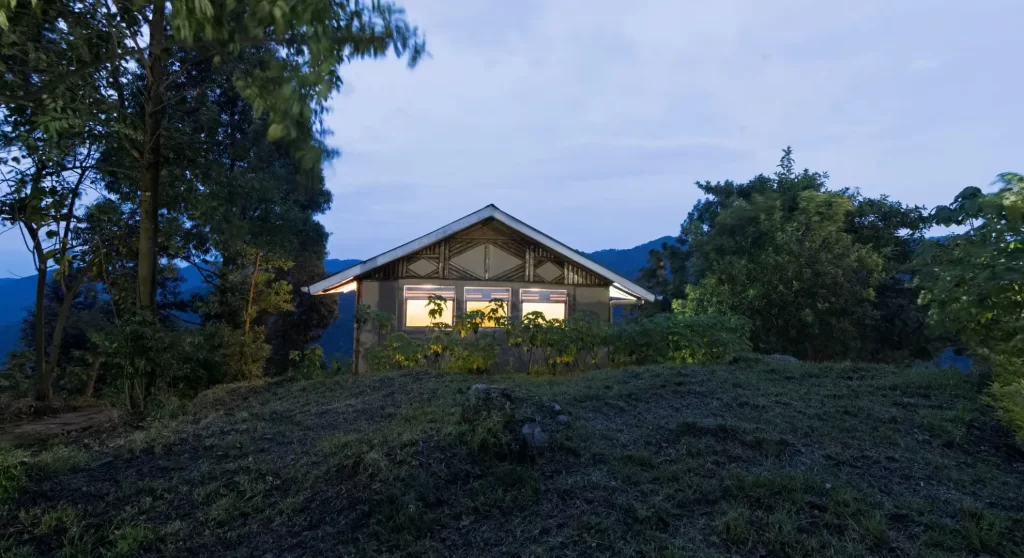
Questions About Gorilla Habituation Experience?
We will be happy to answer all your questions about the experience, accommodations and possible travel routes!

